Sewoon Plaza, Reborn as Makercity Sewoon
Last Updated on April 4, 2024
When walking down the streets of Seoul, Korea it’s common to notice only what is on the street level nearest you, but there is always so much more to see. Buildings with rooftops, decorated seating, and cool vibes abound and few find them. Want a view out over the Jongno area? You must find Sewoon Sangga (세운상가), also known as Sewoon Plaza and revamped into Makercity Sewoon.
Sewoon means “attracts all the energy of the world” and it seems like it does, no matter which of the names above you end up using. The market went from boom to bust and it’s about to go to boom again.
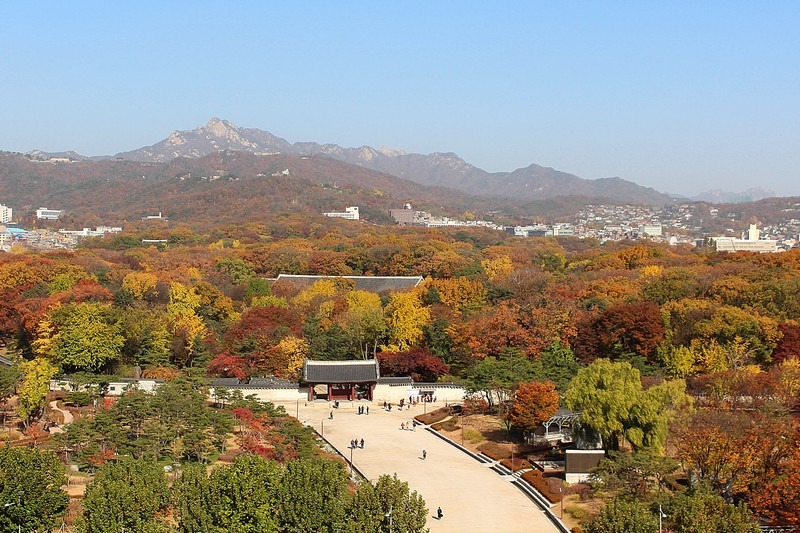
Learn more about Sewoon Plaza and get epic views of downtown Seoul from the seating on the roof:
- How To Get There
- The History Of Sewoon Plaza
- Why You Need To See Sewoon Sangga
- What To See
- What to see nearby
- Jongmyo Shrine
- Gwangjang Market
- Cheonggyecheon Stream
(This post contains affiliate links, which means I receive a certain percentage of a sale if you purchase after clicking at no cost to you. Thank you for your support.)
How To Get There
Address: 136 Cheonggyecheon-ro, Jung-gu, Seoul (서울시 중구 청계천로 136)
By Subway: Go to Jongno 3-ga Subway Station and take exit 12. Walk straight for less than a block and you’ll find the Sewoon Plaza on your right.
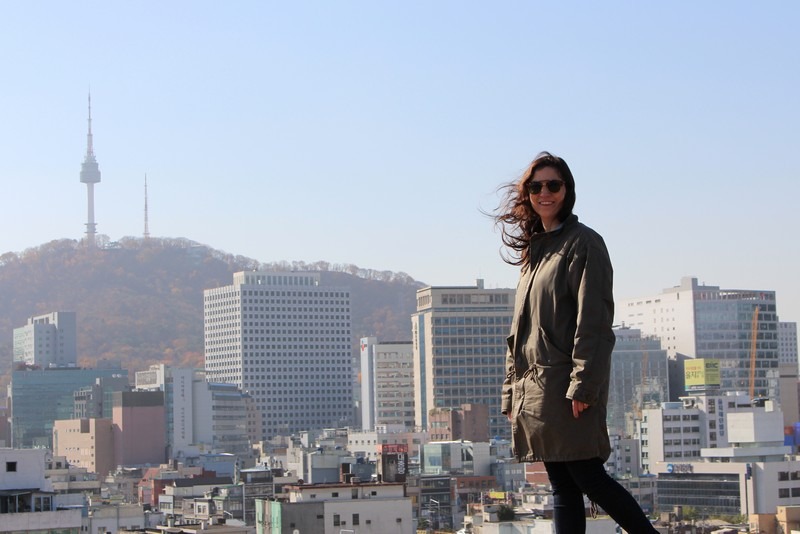
The History Of Sewoon Plaza
In 1945, at the end of WWII, the area where Sewoon Sangga now sits was empty to prevent the spread of fire during potential bombings. By 1950 when the Korean War broke out, the area was used as a settlement camp for refugees and by 1960, architect Kim Soo-Geun was tasked with creating the first modern residential-commercial complex of Korea and the building you now see was founded in 1968.
The area saw a bit of a boom in the 70s but it’s been steadily declining and the building itself was either going to be demolished or repaired. Actually, according to the “Sewoon Green Area Building Project” of 2009, the building was set to be demolished.
The market, which sits in Jongno and is surrounded by popular markets like Gwangjang Market that sells delicious food and vintage clothing, doesn’t sell the sort of goods that bring in young clientele or tourists but with a reformation project, it definitely will.
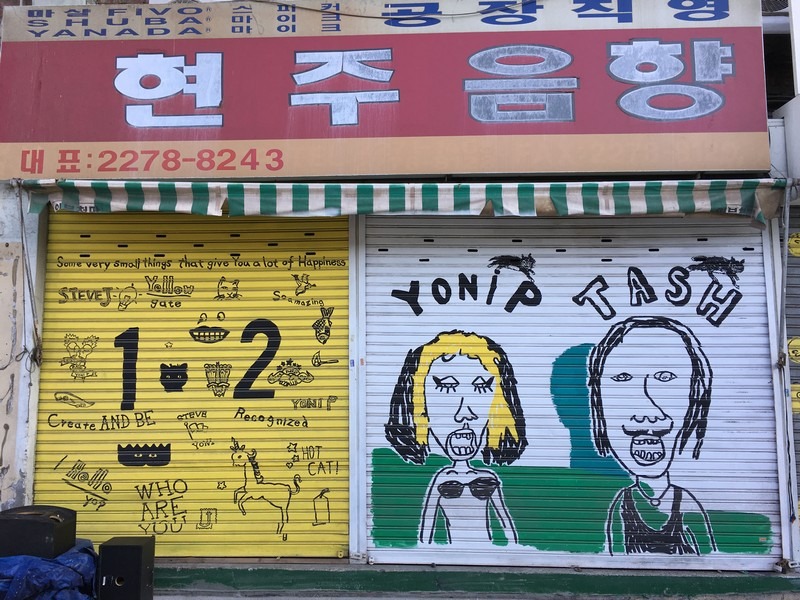
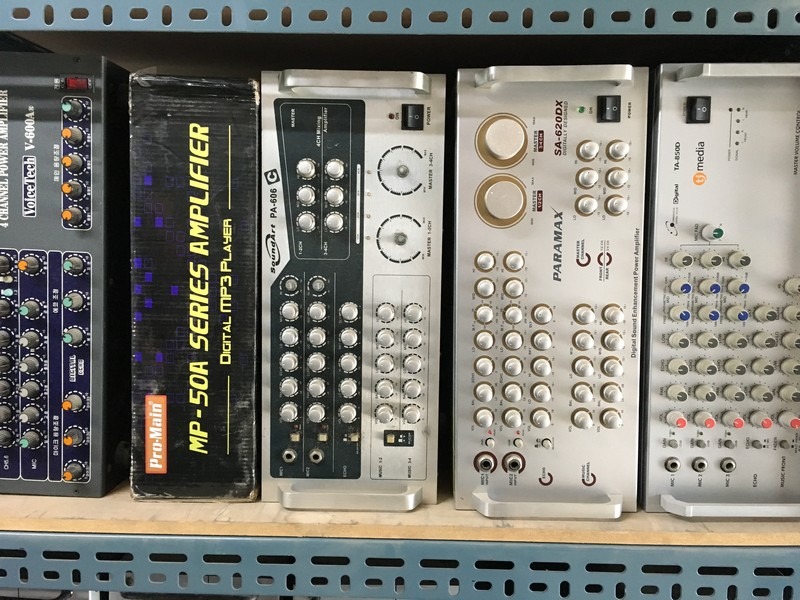

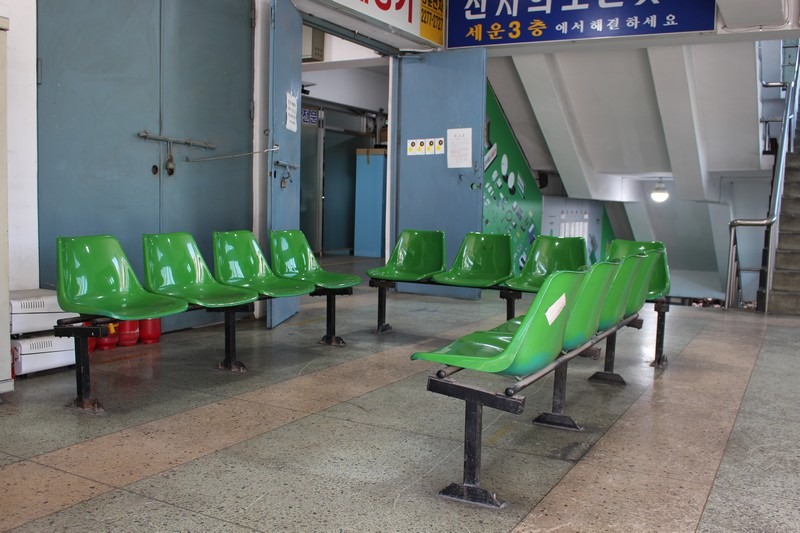
In 2014, it was finally decided that rather than demolishing the building there today, which could cause further recession in the area, the building would be restored and more.
In 2016, the Seoul Metropolitan Government started the “Dasi (Again) Sewoon Project” meant to restore and rejuvenate the area. The first phase of the project would connect Jongno, Sewoon Sangga, Cheonggyecheon Stream and Daelim Sangga by sky walks. This was completed around August of 2017.
Walk across and see the Cheonggyecheon from a second floor viewing point rather than street level from here. The sky walk between Sewoon Market and Daerim Market actually used to exist but when the Cheonggyecheon Restoration Project was underway, the walk way was demolished. It’s nice to see it up again.
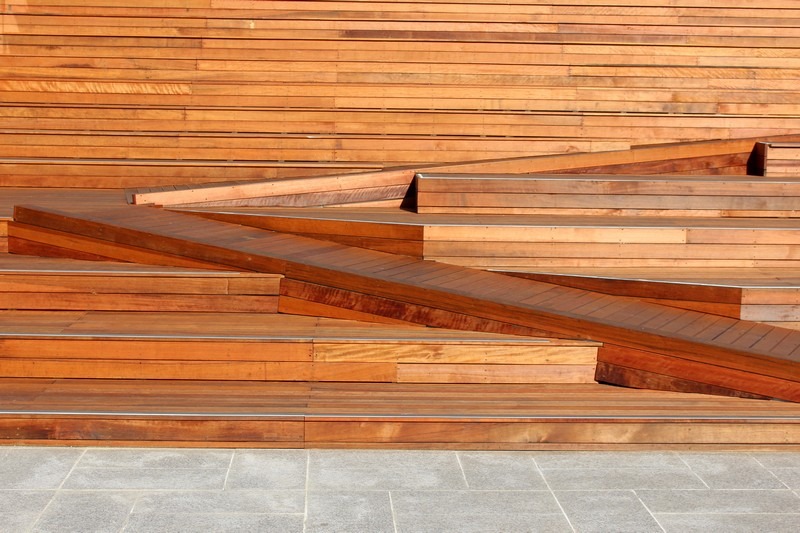
Why You Need To See Sewoon Sangga
No, Sewoon Sangga is not the most architecturally stunning building in downtown Seoul but it is a slap back against the gentrification that often happens in favor of regeneration and revitalization.
Areas across Seoul are seeing a change but in ways that take what exists and just uplifts them. Take Seoullo 7017, for example, instead of completely destroying the road that was there, it was transformed into a pedestrian-friendly walkway that allows people to make their way across the massive 10… or maybe it’s 12 lane road in front of Seoul Station. Sewoon Sangga furthers the push to accept and celebrate the past and the future that can be.
What may seem like a fairly standard giant downtown city building with little architectural appeal is really an entirely functional market that instead of being completely destroyed is being given new life with an injection of young energy focused on recycling, reusing, and re-envisioning what was and can be with a little know-how. It’s an ode to the past that celebrates the current electronics market vendors that are still living and working there and that’s stunning.
Foreigners often note how in Seoul things close, are completely gutted or torn down in just days and rebuilt in just mere months to be completely different and new. While that quick turnaround is appealing at times, I think the appeal of Sewoon Sangga is the ode to the past that it is.
What To See

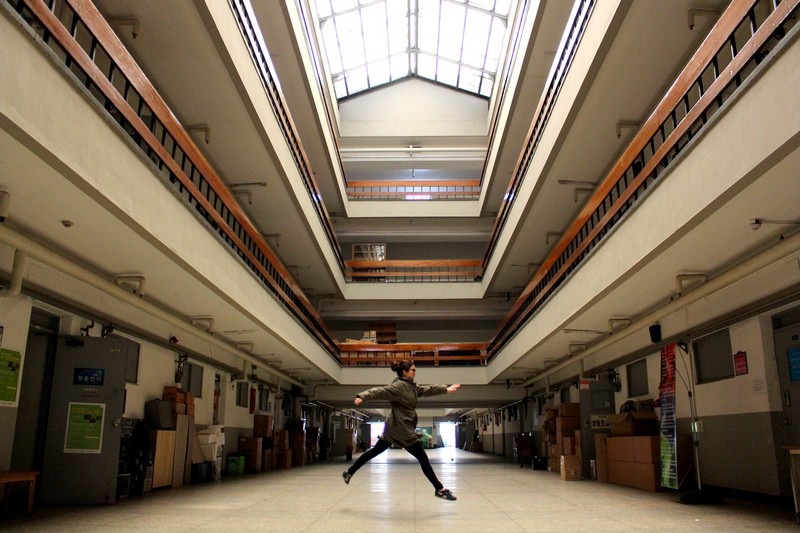

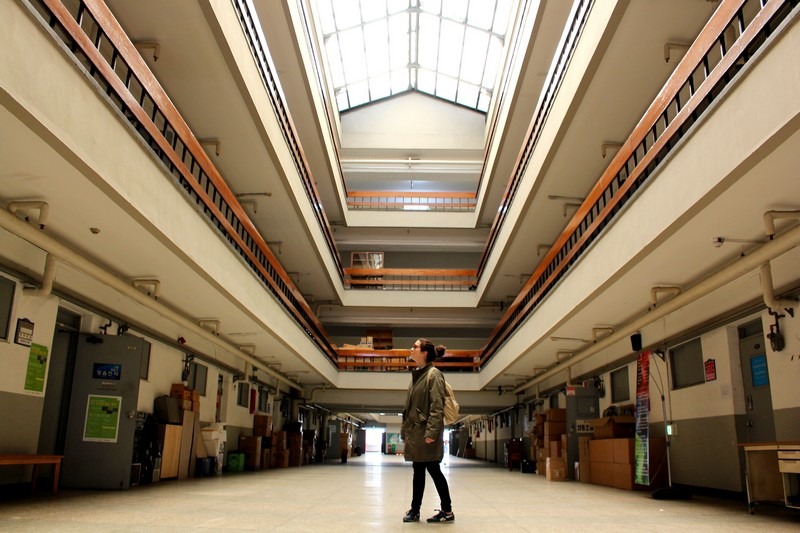
Ground Floor On Up
From the plaza entrance, you actually come in above ground, but you can walk down under the steps or take an elevator down to see the ground that was uncovered and learn a bit about the area there.
On the second floor platform around Sewoon now which is where the skywalk connects, containers have been set up to be innovation and design spaces and hubs. Artists and artisans are moving in and cafes and eateries are there too to bring in more business. It is expected to bring more than 200 new businesses to the area. To combat the issues of gentrification, the Lease Dispute Resolution Committee has been organized as well as a “Gentrification Prevention Agreement” has been made to help the business that are there thrive as well as bring in new businesses to revitalize.
Sewoon Sangga will evolve into Maker City where start-ups can work with master craftsmen for the “fourth industrial revolution“. Some artists have already taken up residence, shutters have been painted and photographers can be seen milling around checking out the progress.
Right now, the building is pretty cool as you can still see a LOT of the old as it is transforming into the new. A central arcade area on the fifth floor (I hope I’m remembering that correctly) is a bit desolate now but makes for some cool pictures as you wander in alone. This space will most assuredly not be like this in the future though. The light that comes in from the rooftop is gorgeous and you wouldn’t even know the beautiful arcade is there… but it is.
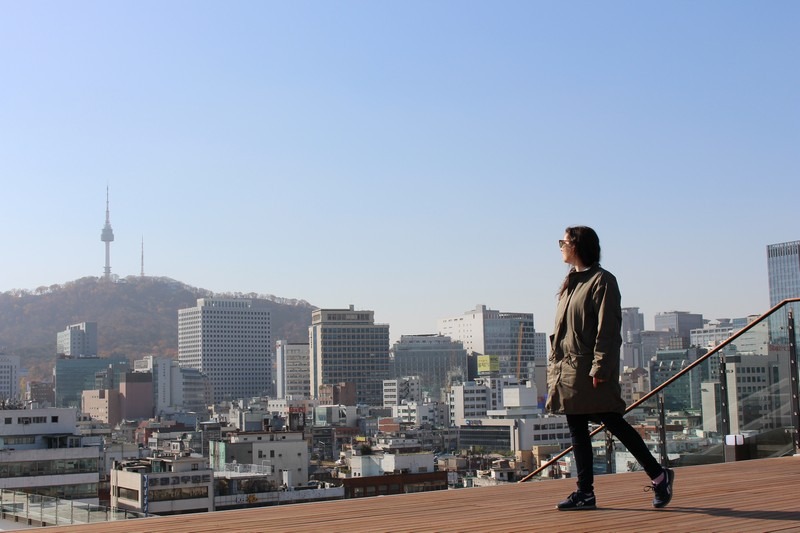
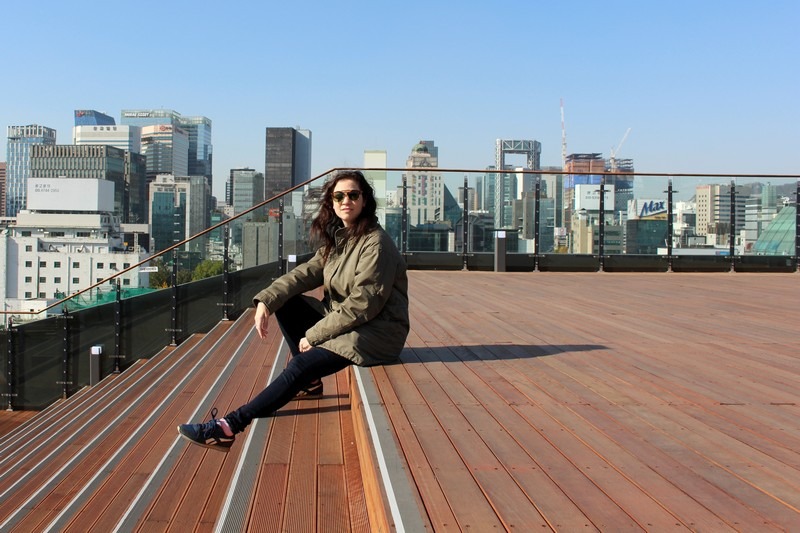
An Epic Rooftop
The rooftop has been designed as a cultural space and has already seen events and concerts as younger enthusiasts are coming in to take part. The rooftop offers amazing views of the surrounding neighborhoods, Namsan Tower and Jongmyo Shrine from above. It’s pretty stunning and so few people know about it that it’s likely you’ll be the only person up there, if you go soon. The rooftop has been outfitted with viewing areas, built in lounge chairs and a rooftop garden. (Interested in rooftops and views? Check out these other great spots around the city of Seoul that should not be missed.) I’m pretty sure the pictures speak for themselves… just look at those views!
There are so many awesome projects that have happened around the city to take old spaces and places and turn them into different facilities. If you like finding them like I do, check out B39 in Bucheon which is an arts and culture space but was formerly a trash facility or the chemical facility turned culture complex called Cosmo 40 in Incheon. If you’re headed to Jeolla, then you can also stop into the awesome Sansok Lighthouse outside of Jeonju that used to be a paper factory but is now a culture and arts complex. Learn more about regeneration in Korea.
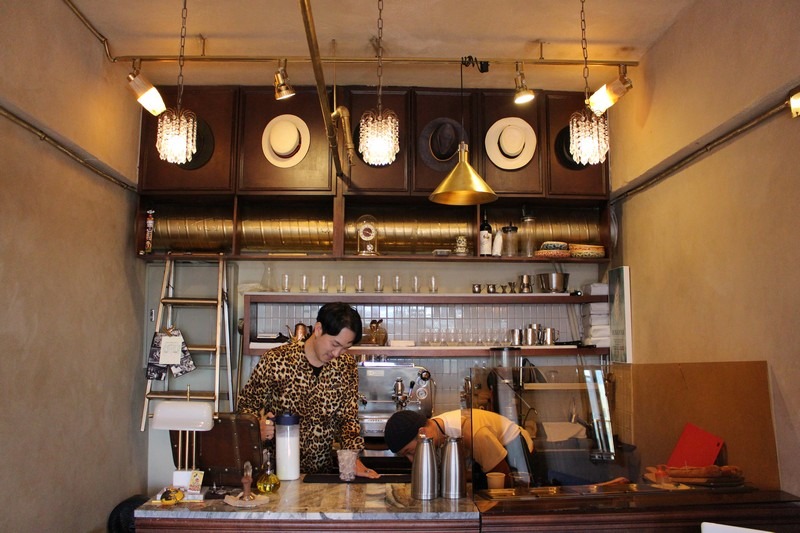
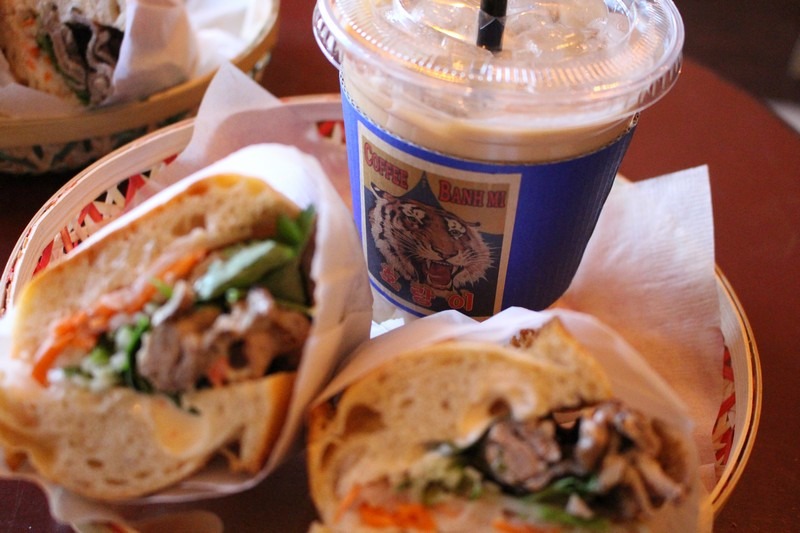
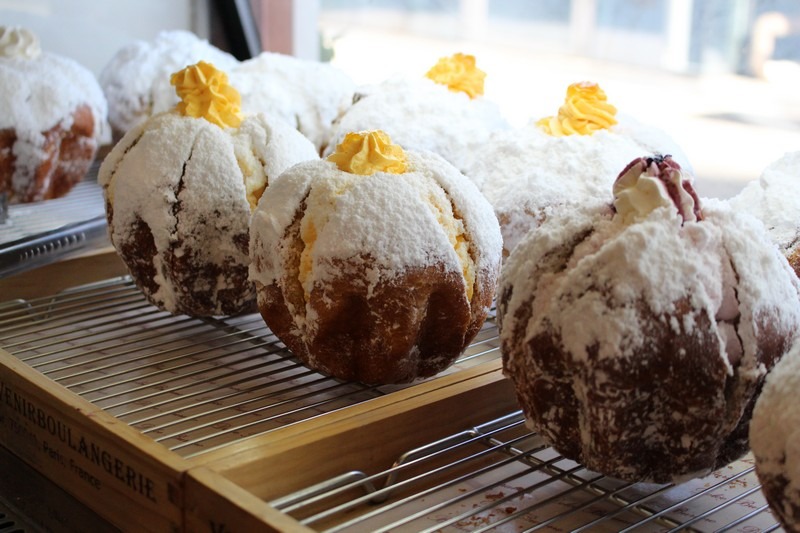

Horangii Coffee (호랑이카페 을지로)
Back down on the second floor of the market, check out what is or will be open. We stopped into “Tiger Coffee” for a really delicious Banh Mi sandwich and coffee for lunch. The spot seems to be going for some cool charm with a metal and wood rustic bar, gold accents and velvet seating.
- Address: 157 Euljiro-ro, Jung-gu, Seoul (서울특별시 중구 을지로 157)
- Hours: Tuesday – Saturday: 11:00am ~ 7:30pm
What to see nearby
If you want to check this out and add it neatly into a day downtown, here are a few other things you can see at the same time to make it an easy and walkable trip in downtown Seoul.
Jongmyo Shrine
Located just across the street and pictured above in a striking photo, Jongmyo Shrine is a beautiful and quiet site to tour. Built in the 14th Century, Jongmyo Shrine (종묘) is the oldest Confucian royal shrine in Korea. Jongmyo Shrine was originally built in 1395 on order by the first king of the Joseon Dynasty, King Taejo. It was built alongside Gyeongbokgung Palace, the largest palace in Korea. The purpose of Jongmyo Shrine, like all Confucian shrines, is to preserve the spirits of ancestors. Today, all of the original tablets still exist, with 83 total in the whole shrine.
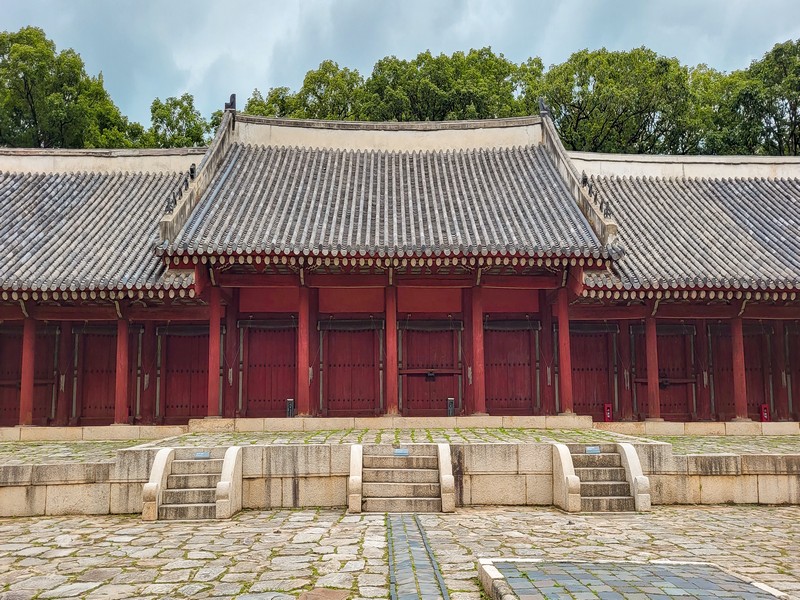
Gwangjang Market
If you’re feeling a pang for hunger, definitely head to nearby Gwangjang Market for food. This bustling traditional market has delicious eats and treats from morning and into the night. Have your fill of noodle soups, dumplings, or go adventurous and try chicken feet. Don’t worry, there’s plenty in between and all of it is fresh and good. I highly recommend eating here at least once but so many times if you have the time to spare.
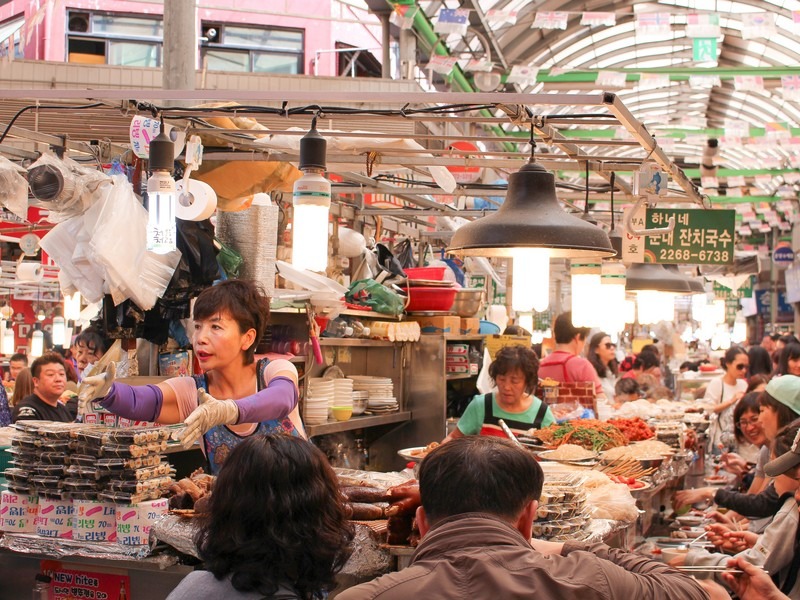
Cheonggyecheon Stream
As mentioned, the Sewoon Plaza now has a bridge that extends over the iconic Cheonggyecheon Stream. There’s a lot to see along this stream though from tiled mosaics to seasonal floating exhibitions and more. See what’s going on and if the weather is nice, take a leisurely walk. You could even head all the way out to the Han River this way and not have to cross any busy roads to get there. Definitely check out the Cheonggyecheon Stream now… or later.
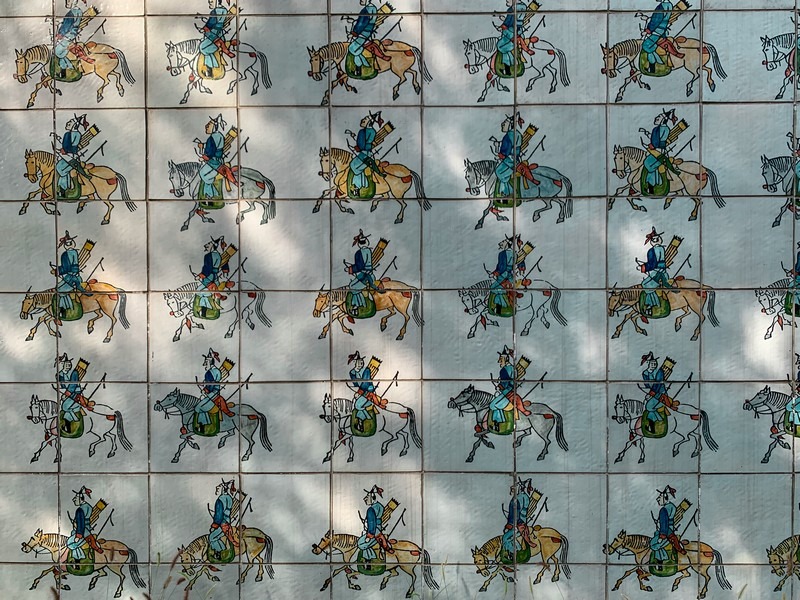
Did you like this post? Pin It!
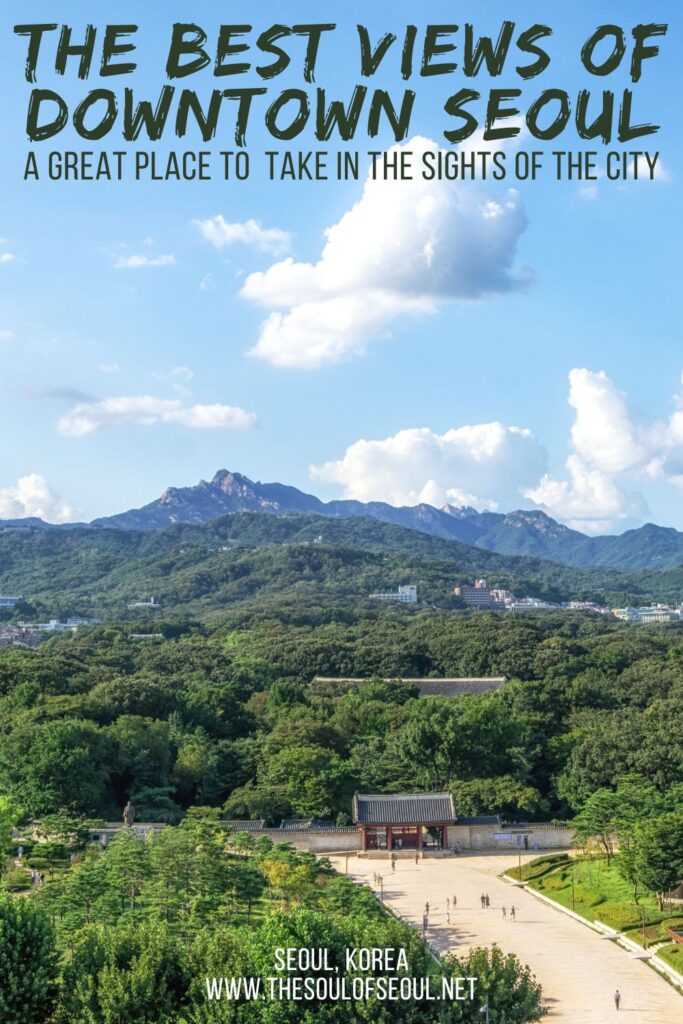
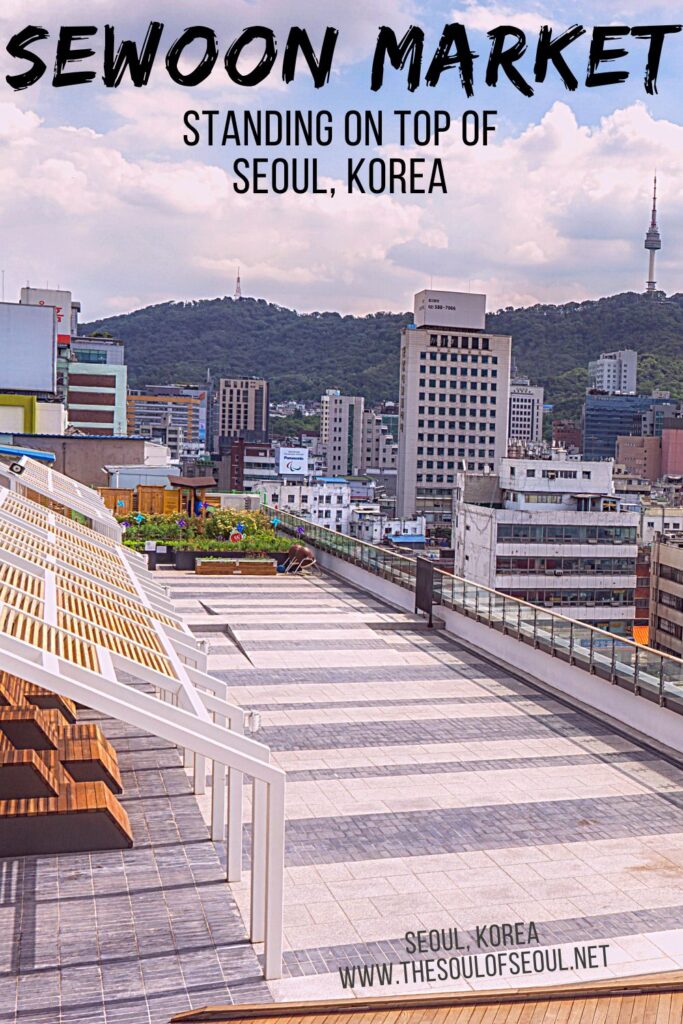
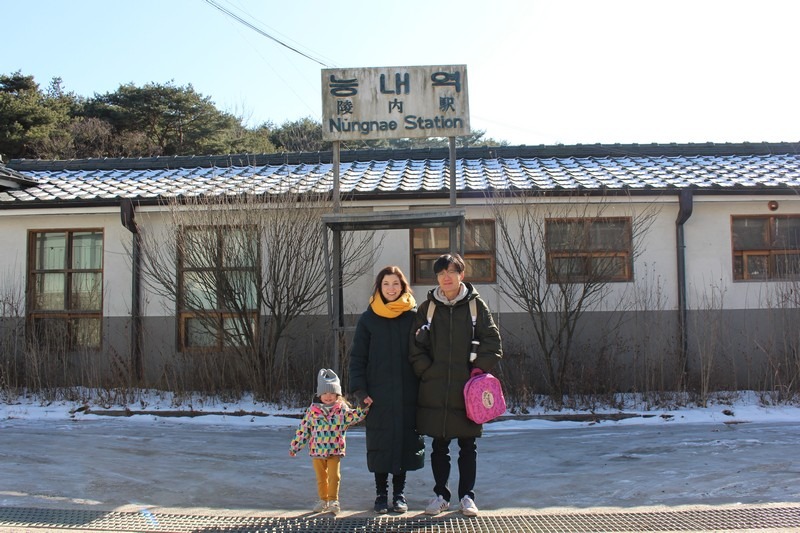
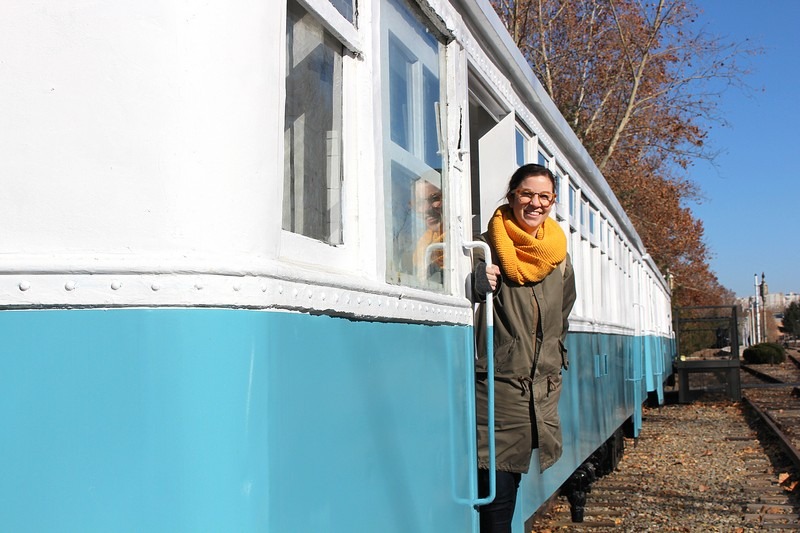
5 Comments
PLeong
I bought your 15 day itinerary. Is the sewoon makercoty roof top open or still closed. I am arriving Iin seoul on 23 Dec 23. Thanks
Hallie Bradley
I’m not sure about right now. Someone I know was just up there a couple months ago. Even if you can’t get to the top floor, there’s a viewing platform on the floor below. I’d still try to get into the elevator and see how high you can get in the building.
Hanie
Hi there.
This place is a gem! Is there any opening hours for the rooftop? Thanks in advance.
Agness of Fit Travelling
Wow! This place offers some astonishing and breathtaking views, Hallie. I will have to visit this place when in Seoul! 😉
Hallie
You definitely have to! It’s a great spot that few people are taking advantage of these days.